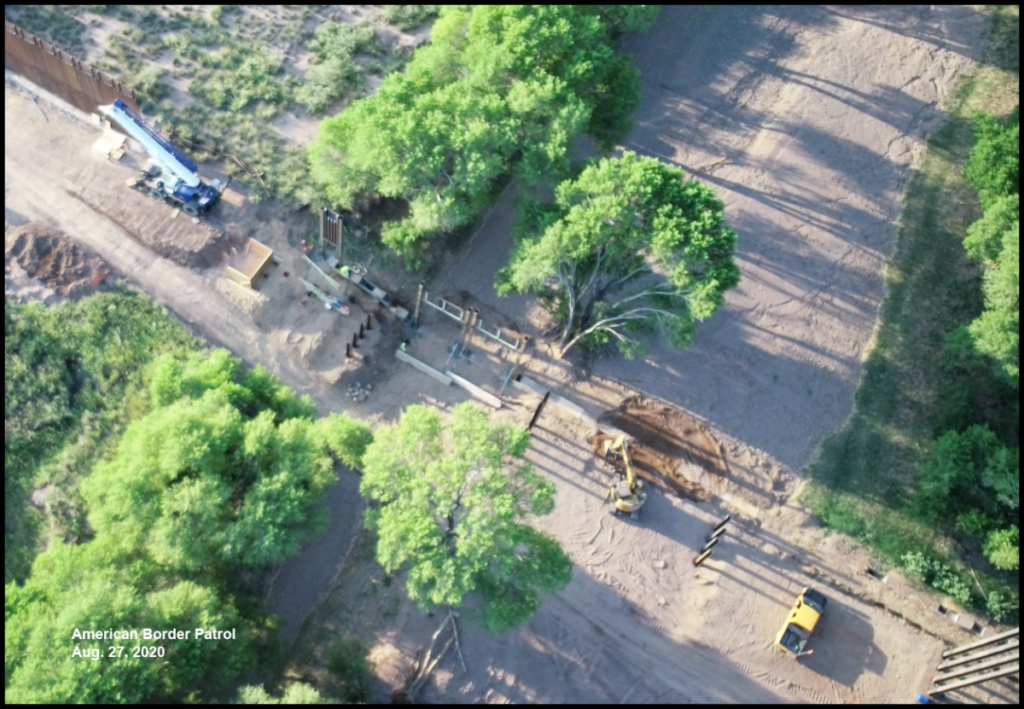In July 2020, construction of a 30-foot steel border wall began across the last free-flowing river in Arizona. Despite monsoon floods that push water 140 miles from the San Pedro River’s headwaters in Mexico northwards to its convergence with the Gila River in Winkelman, Arizona, construction crews are actively trenching and installing steel bollards this month. This type of river barrier is unprecedented and raises many questions about how this wall will impact the ecology of this important riparian ecosystem.
The San Pedro River crosses the U.S.-Mexico border west of Douglas, AZ on land federally protected in 1988 as the San Pedro River National Conservation Area (SPRNCA). The SPRNCA spans 40 miles along the river and is habitat for 18 federally listed, or proposed, threatened and endangered species. It supports the largest breeding population of gray hawks (Buteo plagiatus) in the U.S. with up to 40 pairs (40% of the population). It also has the largest yellow-billed cuckoo (Coccyzus americanus) population in the U.S. More than 250 species of migratory birds and 100 species of resident birds uses this major north-south migratory bird corridor. Of the 900 species in North American, 45% use the San Pedro River at some point in their lives.

A fallen cottonwood lies in the riverbed of the San Pedro River. Border wall construction will block the last free-flowing river in Arizona and affect hundreds of species that depend on this lush ecosystem. Wall construction is occurring on the San Pedro River National Conservation Area. Photo credit: Glenn Spencer
The San Pedro River is also home to 600 plant species including the endangered Huachuca water umbel (Lilaeopsis schaffneriana ssp. recurva). It provides habitat for 80 species of mammals, including designated habitat for jaguar (Panthera onca). Two species of native fish—the longfin dace (Agosia chrysogaster) and desert sucker (Catostomus clarkii) live in the San Pedro and the river contains proposed critical habitat for the Northern Mexican gartersnake (Thamnophis eques megalops).
Experience virtually the remarkable plants and animals that reside in the San Pedro River ecosystem by watching our first Coffee Break webinar, A Stroll on the San Pedro River.
